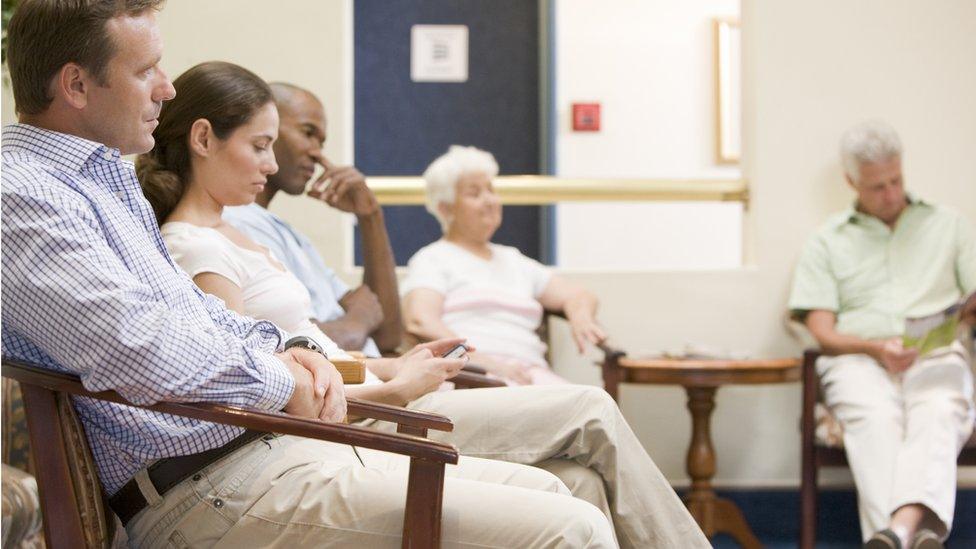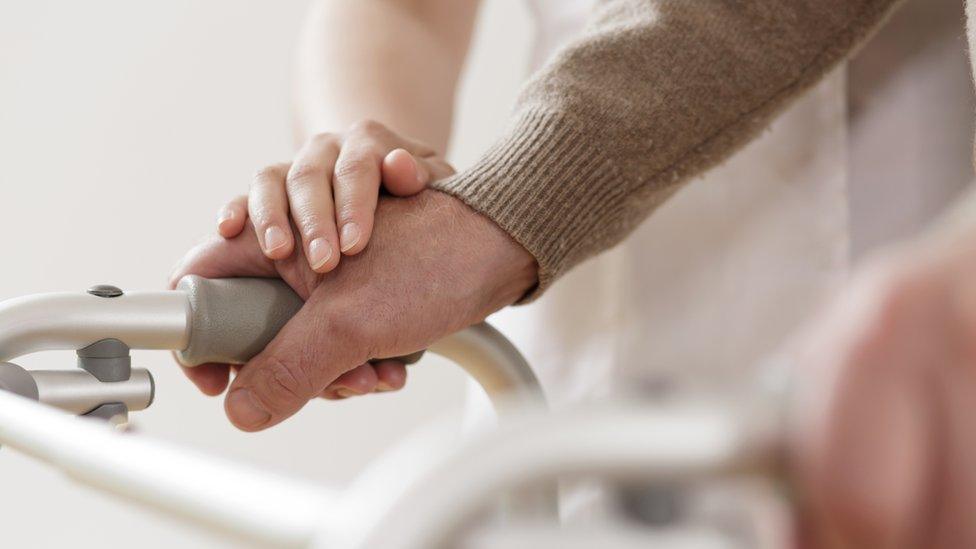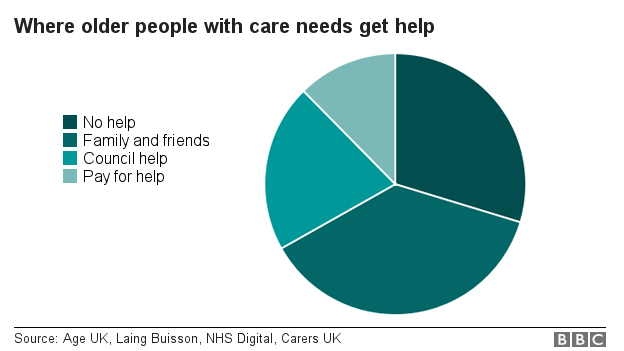Is the NHS going to break in 2017?
- Published

The past few months - if not the whole year - have seen a constant stream of warnings about impending Armageddon in the health service.
We have heard how the system has reached various levels of crisis from "tipping point" and "breaking point" to "on the brink of collapse".
But is it really that bad? And if so, what can we expect in 2017?

A bit of perspective
Firstly, let's put these predictions in context. Perhaps the most significant warning of recent months came from the Care Quality Commission. In is State of Care report, in October, the regulator said the system was at a "tipping point".
By that, it didn't mean the whole system was about to collapse. The NHS has always found - no matter how acute the pressures - a way of carrying on. It simply prioritises the most in need.
So what was the CQC getting at? Put simply, it was saying the health and care system had reached the point where the gradual deterioration in standards had gathered such momentum that another drop and the rate of deterioration would accelerate exponentially.

The waiting game

So what could that mean for patients? Longer waiting times for sure. Key targets are already being missed. One in 10 patients in England is currently waiting longer than four hours to be dealt with in A&E. This is the worst performance since the target was introduced in 2004. And in Wales and Northern Ireland, the situation is even worse.
But if you want to know how bad it could get, the worst performers give us a clue. In some hospitals, a third of patients have to wait longer than four hours to be seen.
The waiting list for non-emergency operations, such as knee and hip replacements, is also getting worse. Soon there will be 4 million people waiting for an op - that is one in 13 people. So far, the NHS has managed to keep the long waiters - those waiting more than six months or even a year - down to a bare minimum. But as the NHS can only see about 300,000 patients a month, it seems pretty clear that is going to change.

And what about the money?
The frightening thing for ministers - and in particular the Treasury - is just how much cash the NHS is swallowing. Over £130bn is spent on the health service across the UK. In England, the budget was increased by 4% in real terms this year.
But still it hasn't got enough. Hospitals continue to rack up deficits. And while the NHS will undoubtedly still manage to balance its books by year end in March because of surpluses elsewhere, the prospects for the next financial year are much gloomier.
The 2017-18 year will see a much smaller rise in the budget - under 1% once inflation is taken into account.
That - to borrow a phrase from former Manchester United boss Sir Alex Ferguson - really will be squeaky bum time. Yes you can always argue the Treasury will step in and provide more funds, but no area of government spending has had as generous a settlement as the NHS. Tough questions will be asked and cuts will undoubtedly have to follow.

Where is the axe falling?
Talking of cuts, isn't there a whole host in the pipeline? Yes. In the coming months expect to hear plenty about the catchily named sustainability and transformation plans.
There are 44 of them covering the whole of England and some are pretty radical - involving closures of A&E and maternity units and, in some cases, whole hospitals. Consultations are likely to be getting under way over the next few months and these are bound to provoke local protests.

Caring for elderly people

Another hot topic at the moment is social care - and that brings us back nicely to the original warnings of Armageddon. This covers the council-funded services provided to disabled and elderly people, such as care homes and help in the home for daily tasks such as washing and dressing. And it is what is happening in this sector which many believe could be the straw that "breaks" the camel's back.
At a time when the population is ageing you would think more and more people would be getting help. But the opposite is true. The number of over-65s being helped has fallen by over a quarter in the past five years. This is seen as critical, because the cuts have been linked to the rising numbers of older people turning up at A&E. The care system and NHS are - it is argued - two sides of the same coin.

The government has already tried to take action. Before Christmas, ministers announced that councils would be able to raise council tax more quickly than had been planned. But the jury is out on whether this will actually lead to that much more money being invested in services. And with four times as many people sitting outside the council care system (once you combine those getting no care, paying for it or relying on family) as are inside, any impact is going to be limited.
So where does that leave us? Seasoned observers have started talking about a return to the 1990s when images of overcrowded hospitals and stories of patients waiting years for treatment dogged John Major's Tory government at almost every turn. Could the same happen to Theresa May?